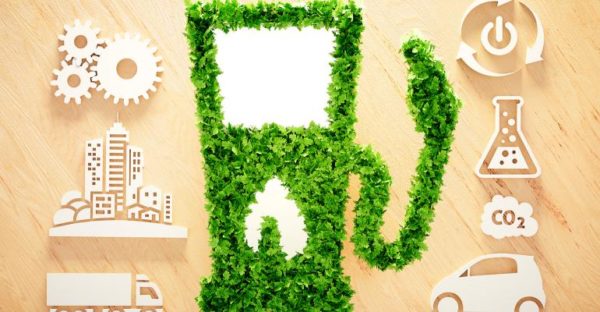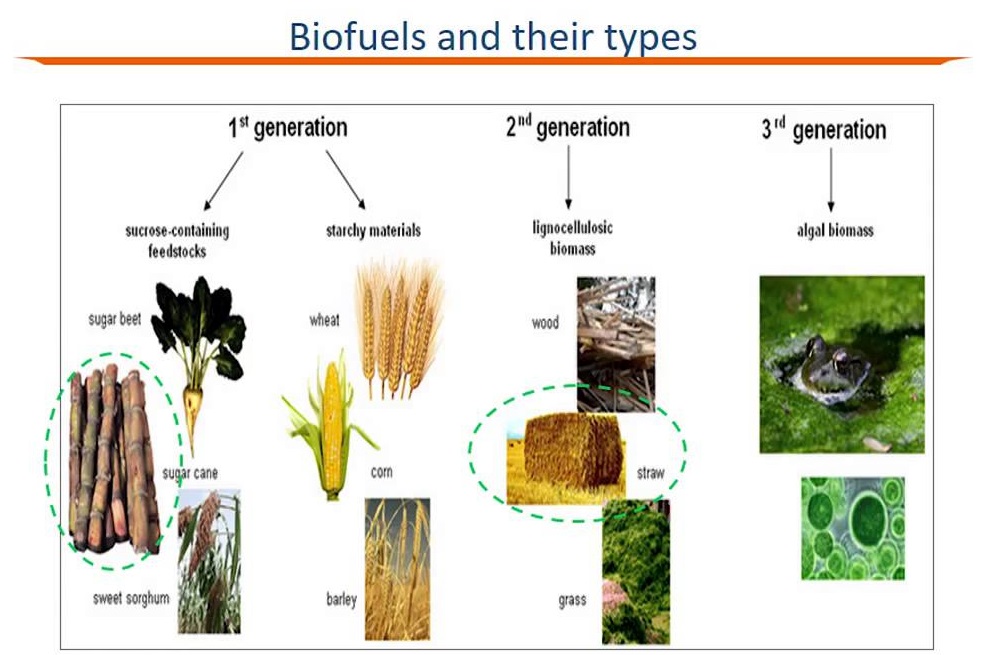Biofuel Generation in India – Complete Analysis

National Bio-fuel Policy – 2018 seems to be chasing ambitious targets based on unclear plans and questionable technologies. Moreover, the pollution levels and fuel prices are only rising and our biofuels programme is becoming irrelevant because of the lack of effective implementation.
This topic of “Biofuel Generation in India – Complete Analysis” is important from the perspective of the UPSC IAS Examination, which falls under General Studies Portion.
What is the background?
India is dependent on imports of petroleum, where around 82% of its crude oil requirement is being met from the Middle East.
The increasing number of automobiles has also raised crude oil consumption, where the import volume equals around 217 million metric tons during the year 2018. But it was around 203 million metric tons in 2016.
This has resulted in a decrease in the value of foreign reserve that also faces frequent disturbance during the increase in crude prices.
In order to contain the price rise, the government and the economic experts have been recommending the biofuel as a replacement for the crude oil.
What are Biofuels?
Biofuels are liquid or gaseous components which are used as fuels.
They are mainly manufactured from biomass and can be used as an alternative or sometimes as additives to petrol, diesel or other fuels.
The crops with higher sugar content such as sugarcane, sugarbeet, sweet sorghum are most used for the manufacturing of biofuel.
Even starch (like Maize and Tapioca) or oil (like soybean, rapeseed, coconut, sunflower) can also be used for manufacturing biofuels.
What are the categories of biofuels?
First Generation Biofuels:
- Fuels produced from sugar, starch, vegetable oil, or animal fats utilizing conventional technology.
- Some of the common first-generation biofuels are Bioalcohols, Biodiesel, Vegetable Oil, Bioethers, Biogas.
Second Generation Biofuels:
- Fuels made from non-food crops such as cellulosic biofuels and waste biomass i.e. stalks of wheat and corn, and wood).
Third Generation Biofuels:
- Fuels made from micro-organisms such as algae.
- It doesn’t require cultivable/arable land for production.
Fourth Generation Biofuels:
- Like the third generation, fourth-generation biofuels are made using non-arable land. However, unlike the third, they do not need the destruction of biomass.
- This class of biofuels includes electrofuels and photo-biological solar fuels.
What are some of the popular biofuel crops?
Jatropha:
- It is a multi-purpose non-edible oil-producing plant.
- It is hardy as well as the drought-tolerant crop that can be cultivated in marginal lands with fewer inputs.
- The economic life of a jatropha plantation ranges from 30 to 50 years.
Sugarbeet:
- It is a tuber crop capable of producing sugar.
- It is grown in temperate nations.
- As they prove to be a promising alternative energy crop for ethanol production, their tropical variations are gaining momentum in tropical and sub-tropical countries.
Sorghum:
- It is useful as a component that adds value to ethanol, syrup, and Jaggery.
- As fodder for bio-enriched bagasse.
- As a base material for cogeneration. Note: Cogeneration means the generation of electricity and heat so that both can be used rather than the heat being wasted
Pongamia/Karanjia:
- It is a non-edible oil producing tree which can be used to make biofuel.
Water Hyacinth
- It has a high content of hydrocarbons and causes minimal pollution.
What are the benefits of biofuels?
- Biofuels are environment friendly and can minimise vehicular emissions.
- It is made from renewable sources = produced easily through imports.
- Increases engine performance since they contain higher energy boosters when compared to diesel and petrol.
- Provides good lubrication for vehicles.
- As they are made from bio-resources = non-toxic = very safe for storage and transportation. For example, bio-diesel is made from domestic renewable resources like vegetable oils and animal fats.
- They are carbon-neutral i.e., having no net emission of carbon dioxide, or more generally having no net contribution to global warming.
What are the disadvantages of biofuels?
- Producing biomass and converting it into alcohol (fuel) = very expensive = Need high investment.
- As it is economically attractive = Many farmers cultivate bio-fuel crops = lead to the monoculture of crops i.e., producing same crops year after year = leave the soil without the nutrients.
- Need a significant amount of energy for producing biofuels itself = less than desirable energy returns.
- It is very difficult to collect biomass = need resources.
- Biomass crops are not perennial (living for several years).
- Certain energy crops such as water hyacinth can cover and choke lakes and provide a breeding ground for mosquitoes due to their large leaves that causes water stagnation.
What is the National Policy on Biofuels – 2018?
- The government came up with National Policy on Biofuels, 2018 in order to promote biofuels in the country.
- Biofuels in India are strategic importance considering its suitability to initiatives like Make in India, Skill development and Swachh Bharat Abhiyan.
- It also provides great opportunity to integrate with ambitious targets of doubling farmers’ income, import reduction, employment generation etc.
What are the Salient features of the policy?
It categorizes biofuels
to facilitate the extension of suitable financial and fiscal incentives under each category:
- Basic Biofuels: First Generation (1G). Bioethanol and Biodiesel.
- Advanced Biofuels: Second generation (2G) ethanol, Municipal Solid Waste (MSW) to fuels, Third Generation (3G) biofuels, bio-CNG etc.
Expansion of the scope of raw material for ethanol production:
- It allows the use of sugarcane juice, sugar-containing materials (such as sweet sorghum, sugar beet), starch-containing sources (such as corn, cassava), damaged food grains (broke rice, wheat, rotten potatoes) which are unfit for human consumption, for the production of ethanol.
Use of surplus food grains:
- It allows the use of surplus food grains for making of ethanol in order to blend with petrol after getting approval from the National Biofuel Coordination Committee.
- This will guarantee farmers get appropriate price for their produce during the phase of surplus production.
Incentives to advanced bio-fuel:
- Viability gap funding scheme of Rs. 5000 crore in 6 years proposed for 2G bio-ethanol refineries in order to give special focus to advanced biofuels.
- It also provides for additional tax incentives, a higher purchase price for advanced biofuel compared to 1G.
Supply chain mechanisms:
- It promotes the creation of supply chain mechanisms for bio-diesel production from non-edible oilseeds, used cooking oil as well as for short gestation crops.
Integrated efforts:
- It defines the roles and responsibilities of all the concerned ministries and government departments with regards to biofuels for the synergised efforts.
What are the expected benefits of this policy?
Minimize import dependency:
The ethanol supply will assist in reducing import dependency on crude oil while will in turn lead to forex savings.
Cleaner environment:
- Ethanol usage will minimise CO2 emissions.
- It will also lessen Green House Gas emissions by minimising crop burning as well as the conversion of agricultural residues and wastes into productive biofuels.
Health benefits:
- Long-term reuse of cooking oil for preparing food = health hazard = many diseases.
- But, by using cooking fuel as a feedstock for biodiesel = no such hazards.
Municipal Soil Waste (MSW) Management:
- By using advanced techs, MSW can be converted into usable fuels.
- One tonne of such waste has the ability to provide around 20 percent of bio-fuels.
Infrastructural investment in rural areas:
Establishment of 2G bio-refineries across the country will promote infrastructural investment in the rural areas.
Employment Generation:
Establishing one 100klpd 2G bio-refinery contributes to the generation of 1200 jobs in plant operations, village level entrepreneurs and supply chain management.
Additional income to farmers:
- By adopting 2G techs for making biofuels = agricultural residues which otherwise are burnt by farmers can be turned into ethanol = additional income.
- It will also help in price stabilisation for farmers = prevent farmer suicides in India.
What are the concerns with this policy?
Production:
- It is proposed to utilise different kinds of farm produce and not just agricultural wastes for this purpose = distort agricultural o/p in favour of energy crops.
- This is the trend that even the land-rich nations are finding hard to sustain.
Liberty to choose feedstock:
- The liberty granted to ethanol manufacturers to choose their feedstock from a range of crops and other farm materials such as sugarcane juice, maize, cassava etc. remain contentious.
- It is because many of these resources are part of the human or animal food chains.
Sugar industry:
- Ethanol produced directly from the cane juice = complete bypassing of sugar production = distort sugar sector.
- Also, farmers will produce more of this water-intensive crop (sugarcane) = drought + other crops will not be grown on the cultivable lands (monoculture).
- Despite farmers’ benefits, such moves would cause problems in the wider economic interests.
Bio-diesel:
- For biodiesel, the policy proposes utilisation of non-edible oilseeds and short-gestation oil-bearing crops.
- This disregards the fact these oils are being utilised in the pharmaceutical, cosmetic and other industries.
Octane Count:
- WHO already declared 14 Indian cities as among the 20 most polluted in the world.
- In this situation, this policy is totally silent on “fuel octane count”, which has direct impacts on vehicular emissions and air quality.
Untested technology:
- The policy has proposed the viability gap funding scheme and a 6-year tax incentive for refiners producing 2G ethanol.
- However, 2G biofuel is still a new untested technology and there isn’t a single plant worldwide that makes 2G ethanol on a commercial scale.
- Given the amount of funds required and the risk of failure, it is surprising that the government is prioritising 2G ethanol over other aspects.
- Moreover, there is a total lack of transparency in the signing of MoUs with oil marketing firms for the 2G ethanol blending project.
What is the way forward?
- This well-intentioned biofuel policy requires appropriate changes to address the concerns as mentioned above.
- As 2G ethanol is still in the developmental stage, the government should stay with 1G for the time being.
- The policy should be strongly backed by an appropriate technology and production scale in order to be financially feasible and implementable.
- Considering the current market dynamics, the sugar industry’s share in the biofuel mix is unrivaled = need for better pricing for ethanol.
- While source diversification is indeed a positive move, proper improvement of supply-chain infrastructure is necessary to reach the final consumer.
- The government should also eliminate policy barriers that have affected private investments in creating supply chains.




Please make this audio enabled
If you arrange audio or video short form of bio fuel policy will more beneficial for all.